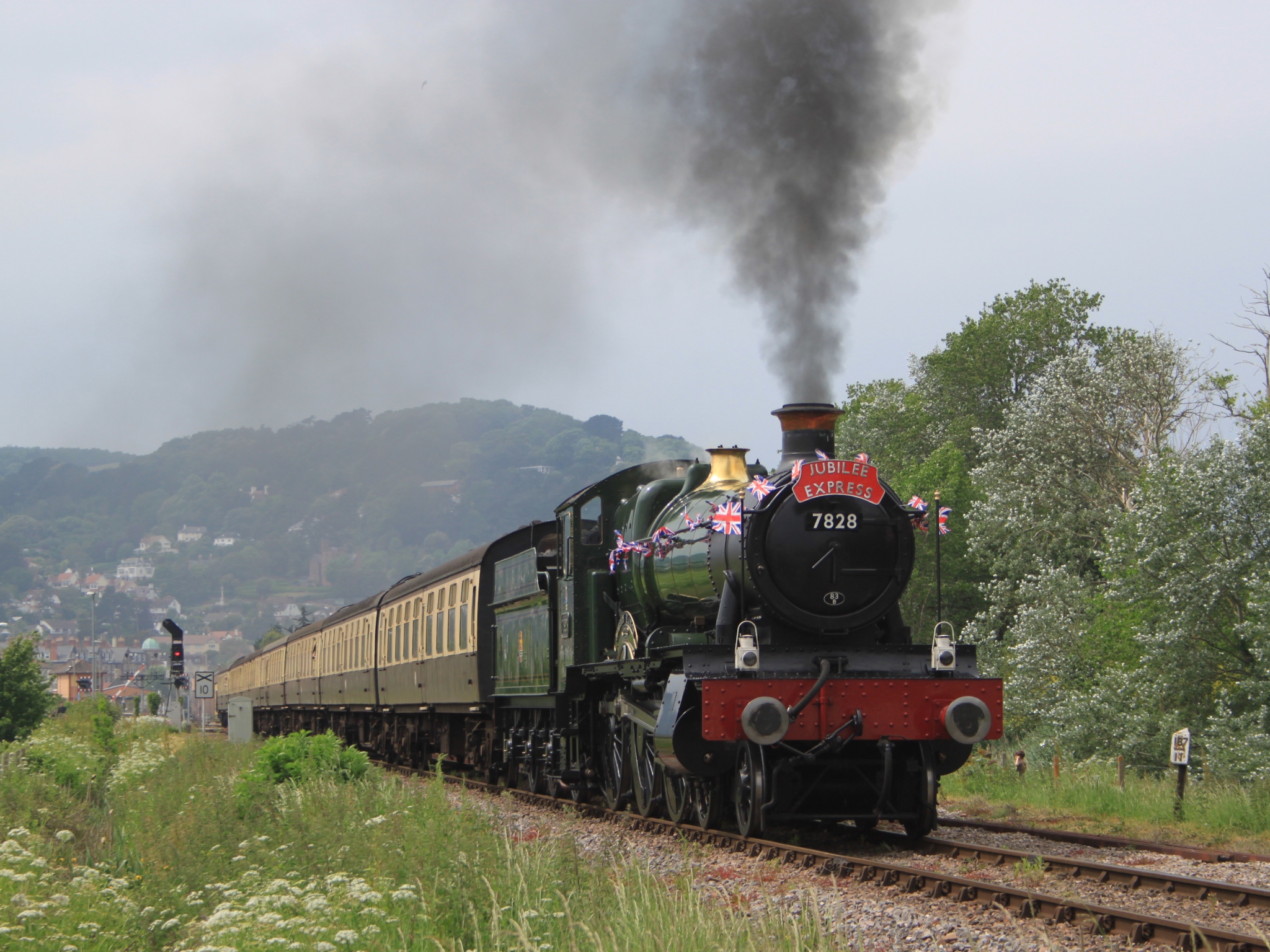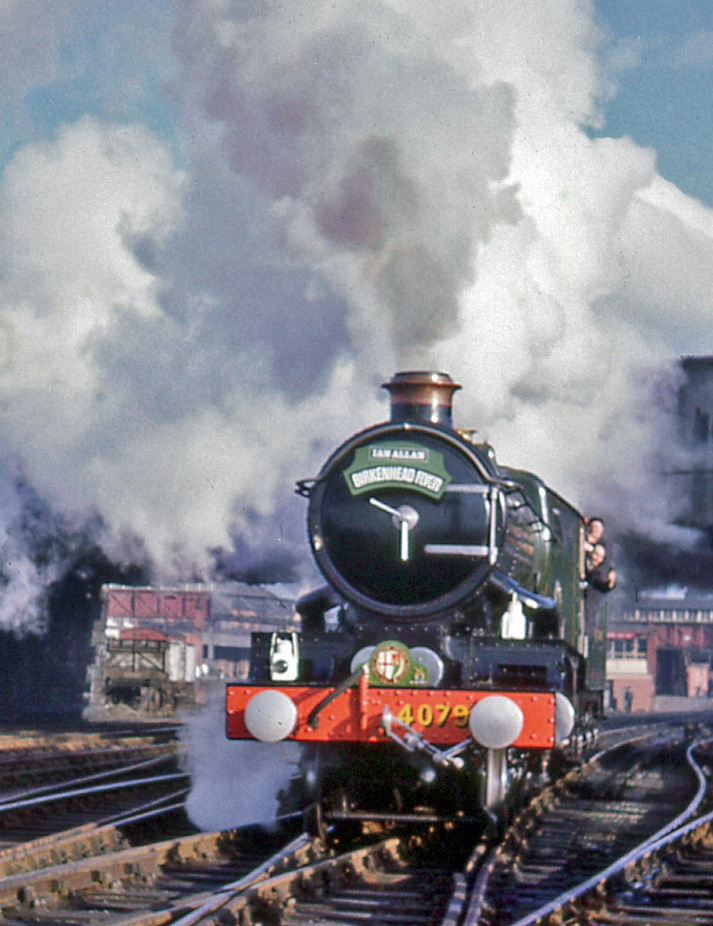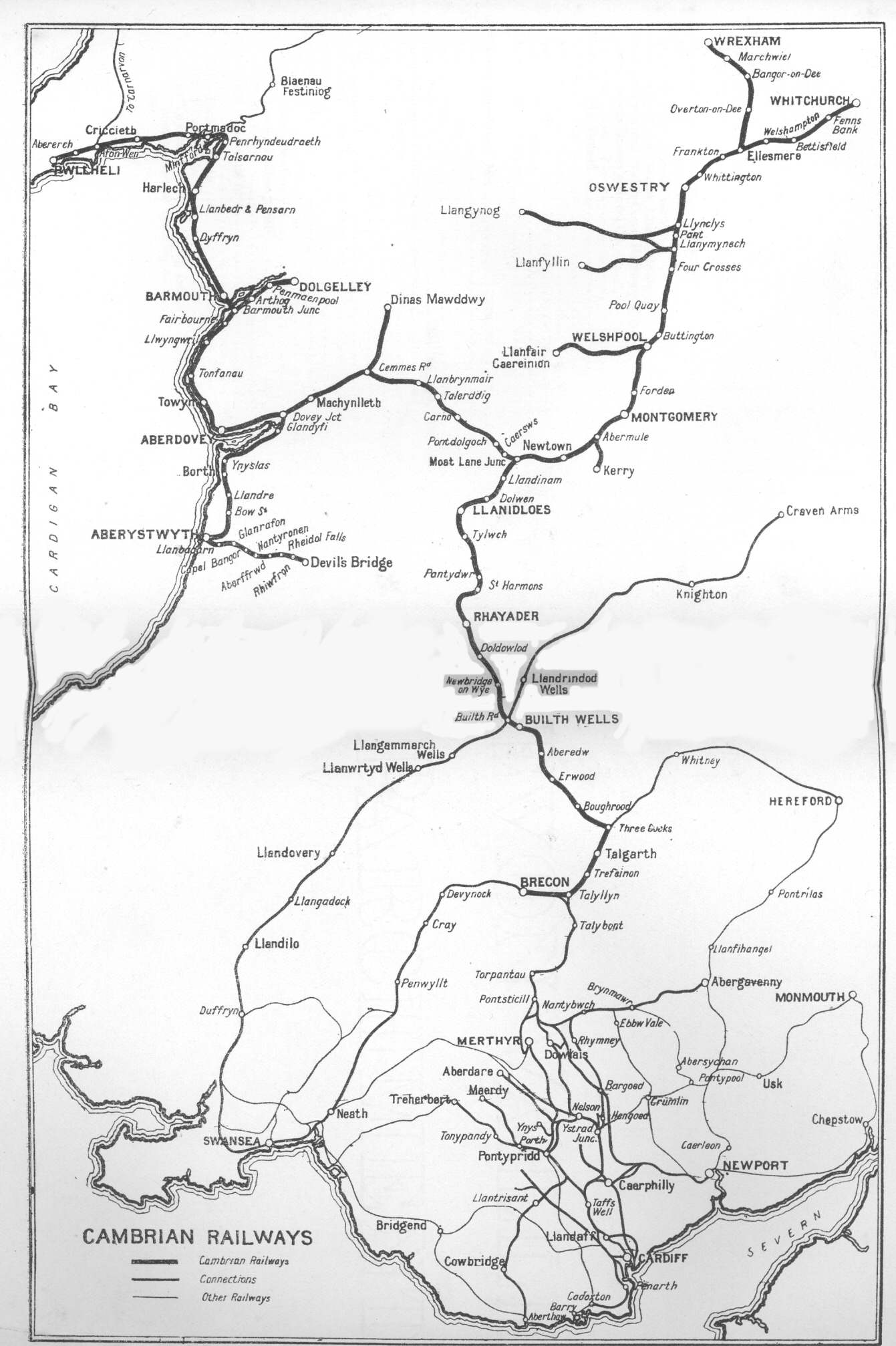|
GWR Manor Class
The Great Western Railway (GWR) 7800 Class or Manor Class is a class of 4-6-0 steam locomotive. They were designed as a lighter version of the Grange Class, giving them a wider Route Availability. Like the 'Granges', the 'Manors' used parts from the GWR 4300 Class Moguls but just on the first batch of twenty. Twenty were built between 1938 and 1939, with British Railways adding a further 10 in 1950. They were named after Manors in the area covered by the Great Western Railway. Nine are preserved. Background Although successful mixed-traffic designs, neither the Hall nor the Grange 4-6-0 classes were able to cover the full range of duties previously undertaken by the 4300 Class 2-6-0 locomotives due to their ‘red’ weight classification. By the late 1930s a lighter version of the Grange class was urgently required for those cross-country and branch line duties forbidden to heavier locomotives. A new lighter (Swindon No.14) boiler was therefore designed, and as with the Gran ... [...More Info...] [...Related Items...] OR: [Wikipedia] [Google] [Baidu] |
Charles Collett
Charles Benjamin Collett (10 September 1871 – 5 April 1952) was Chief Mechanical Engineer of the Great Western Railway from 1922 to 1941. He designed (amongst others) the GWR's Castle and King Class express passenger locomotives. Education and early career Collett was educated at the Merchant Taylors' School (then at Charterhouse Square, London) and the City and Guilds College of London University. He then became an engineering pupil at Maudslay, Sons and Field, a firm that built marine steam engines. In 1893 he entered the GWR Drawing Office at Swindon as a junior draughtsman. Four years later he was put in charge of the buildings section, and in 1898 became assistant to the Chief Draughtsman. In June 1900 he was appointed Technical Inspector, and soon after Assistant Manager, at the Swindon Works. In 1912 he rose to be Manager of the Works, then in 1919 he was made Deputy Chief Mechanical Engineer of the GWR. Chief Mechanical Engineer Collett's predecessor, George Jacks ... [...More Info...] [...Related Items...] OR: [Wikipedia] [Google] [Baidu] |
Wolverhampton
Wolverhampton () is a city, metropolitan borough and administrative centre in the West Midlands, England. The population size has increased by 5.7%, from around 249,500 in 2011 to 263,700 in 2021. People from the city are called "Wulfrunians". Historically part of Staffordshire, the city grew initially as a market town specialising in the wool trade. In the Industrial Revolution, it became a major centre for coal mining, steel production, lock making, and the manufacture of cars and motorcycles. The economy of the city is still based on engineering, including a large aerospace industry, as well as the service sector. Toponym The city is named after Wulfrun, who founded the town in 985, from the Anglo-Saxon ''Wulfrūnehēantūn'' ("Wulfrūn's high or principal enclosure or farm"). Before the Norman Conquest, the area's name appears only as variants of ''Heantune'' or ''Hamtun'', the prefix ''Wulfrun'' or similar appearing in 1070 and thereafter. Alternatively, the city ma ... [...More Info...] [...Related Items...] OR: [Wikipedia] [Google] [Baidu] |
GWR 7800 Class 7802 Bradley Manor
7802 ''Bradley Manor'' is a 7800 'Manor' Class 4-6-0 steam locomotive. Built by the Great Western Railway at its Swindon Works in January 1938 it had an operating life of 27 years being withdrawn in November 1965. Designed by Charles Collett, it is one of nine of the class to be preserved and is currently based on the Severn Valley Railway. Service After leaving Swindon it was sent to Old Oak Common TMD being transferred to Bristol Bath Road TMD in 1939. Like most of its class it eventually ended up on the Cambrian section, arriving at Machynlleth in 1946 where it stayed until its final transfer to Shrewsbury in 1964. Withdrawn from service in November 1965 it was sent to Woodham Brothers scrapyard in July 1966. Preservation It was rescued from Barry in 1979 by the 'Erlestoke Manor Fund' based at the Severn Valley Railway originally as spare parts for 7812 ''Erlestoke Manor''. However the owners had a change of heart and in 1983 the decision was taken to return 7802 to steam ... [...More Info...] [...Related Items...] OR: [Wikipedia] [Google] [Baidu] |
GWR 7800 Class 7828 Odney Manor
7828 ''Odney Manor'' is a Great Western Railway locomotive part of the Manor Class. It is one of 9 locomotives preserved from the class which originally had 30. Built by British Railways in 1950 it was withdrawn from service in 1965 before being moved to Woodham Brothers scrapyard in Barry, South Wales. Since 2004 it has been owned by the West Somerset Railway, being based there since 1995. In 2011 the locomotive was temporarily renamed ''Norton Manor'' in honour of the local Marine Base near the West Somerset Railway. History 7828 ''Odney Manor'' was first sent to Shrewsbury shed and spent nine years there. 1961 saw it move to Croes Newydd, then two years later it found its way to for a short while before returning to Shrewsbury, from where it was withdrawn in 1965, moving to Barry in 1966. Preservation It was rescued from Barry privately in 1981 and moved to the Gloucestershire Warwickshire Railway where restoration was completed by 1987. It worked on the Gwilli Railway, ... [...More Info...] [...Related Items...] OR: [Wikipedia] [Google] [Baidu] |
GWR 7800 Class 7827 Lydham Manor
Great Western Railway 7800 Class No. 7827 ''Lydham Manor'' is a preserved British steam locomotive. It is currently (March 2013) owned by and based on the Dartmouth Steam Railway. The locomotive was built in December 1950. Its first shed allocation was at Chester. In March 1959, its shed allocation was moved to Oswestry. It conducted improved draughting tests in February 1954. In May 1965, it received its last shed allocation at Shrewsbury. No. 7827 was withdrawn in October 1965 and acquired by Woodham's of Barry, Wales, in May 1966. It was sold to Dart Valley Railway and left the scrapyard as the fifth departure from Barry in June 1970. No. 7827 was restored in 1972. It carried the Great Western Livery, which it would never have carried while in mainline service, as it was built two years after the end of the Great Western Railway (GWR). In 2011, ''Lydham Manor'' was reintroduced at the Churston Heritage Festival carrying British Rail all-black livery and bearing the tempora ... [...More Info...] [...Related Items...] OR: [Wikipedia] [Google] [Baidu] |
GWR 7800 Class 7808 Cookham Manor
7808 ''Cookham Manor'' is a Great Western Railway 7800 'Manor' Class steam locomotive. It was built in 1938 at Swindon Works, withdrawn from service in December 1965 and purchased directly from British Railways for preservation by John Mynors, a member of the Great Western Society, in 1965–66. 'Cookham Manor' was the only 'Manor' Class locomotive to have been bought directly from BR. Initially it was stored at Ashchurch, until moving to Didcot in August 1970. It was said to be considered highly by the crews that operated it, and unusually for the class, the locomotive was fitted with a larger water tender. The locomotive initially saw considerable main line use soon after preservation, but is currently on static display awaiting a major overhaul at Didcot Railway Centre Didcot Railway Centre is a railway museum and preservation engineering site in Didcot, Oxfordshire, England. The site was formerly a Great Western Railway engine shed and locomotive stabling point. Bac ... [...More Info...] [...Related Items...] OR: [Wikipedia] [Google] [Baidu] |
GWR 4073 Class
The 4073 or Castle Class are 4-6-0 steam locomotives of the Great Western Railway, built between 1923 and 1950. They were designed by the railway's Chief Mechanical Engineer, Charles Collett, for working the company's express passenger trains. They could reach speeds of up to . Background The origins of this highly successful design date back to the Star Class of 1907 which introduced the basic 4-cylinder 4-6-0 layout with long-travel valves and Belpaire firebox that was to become characteristic of Great Western Railway (GWR) express passenger locomotives. The Star class was designed to take the top express trains on the GWR, with 61 in service by 1914, but after World War I there was a need for an improved design. To meet this need, Chief Mechanical Engineer George Churchward had in mind an enlarged Star class design with a standard No.7 boiler, as fitted to his GWR 4700 Class express freight 2-8-0. However, this combination would have taken the axle load over the 20-ton limit ... [...More Info...] [...Related Items...] OR: [Wikipedia] [Google] [Baidu] |
GWR 6000 Class
The Great Western Railway (GWR) 6000 Class or King Class is a class of 4-6-0 steam locomotives designed for express passenger work and introduced in 1927. They were the largest locomotives built by the GWR, apart from the unique Pacific ( ''The Great Bear''). The class was named after kings of the United Kingdom and of England, beginning with the then reigning monarch, King George V, and going back through history. They handled the principal GWR expresses on the main line from London to the West of England and on the Chiltern line to Birmingham and Wolverhampton, until 1962 when the class was withdrawn. Background and development By 1918, it was apparent to the GWR chief mechanical engineer George Jackson Churchward that his Star Class 4-6-0 locomotives would soon be incapable of handling the heaviest West of England expresses without assistance. He therefore proposed fitting the diameter boiler used on his 4700 Class 2-8-0 on to a 4-6-0 chassis, in 1919, to create a more ... [...More Info...] [...Related Items...] OR: [Wikipedia] [Google] [Baidu] |
Cambrian Railways
The Cambrian Railways owned of track over a large area of mid Wales. The system was an amalgamation of a number of railways that were incorporated in 1864, 1865 and 1904. The Cambrian connected with two larger railways with connections to the northwest of England via the London and North Western Railway, and the Great Western Railway for connections between London and Wales. The Cambrian Railways amalgamated with the Great Western Railway on 1 January 1922 as a result of the Railways Act 1921. The name is continued today in the route known as the Cambrian Line. History Creation of the Cambrian Railways: 1864 The Cambrian Railways Company was created on 25 July 1864 when the Cambrian Railways Act of Parliament received Royal Assent. The company was formed by amalgamating most of the railway companies in mid Wales: the Oswestry and Newtown Railway, the Llanidloes and Newtown Railway, the Newtown and Machynlleth Railway and the Oswestry, Ellesmere and Whitchurch Railway. ... [...More Info...] [...Related Items...] OR: [Wikipedia] [Google] [Baidu] |
Neyland
Neyland is a town and community in Pembrokeshire, Wales, lying on the River Cleddau and the upstream end of the Milford Haven estuary. The Cleddau Bridge carrying the A477 links Pembroke Dock with Neyland. Etymology The name of the town is a reduction of an earlier form of the English word ' preceded by the Middle English ' "at the". It was formerly known as New Milford by contrast with Milford Haven. History Neyland was a small fishing village in the parish of Llanstadwell, but in 1856 it became the site for the western terminus of Isambard Kingdom Brunel's Great Western Railway with a transatlantic terminal for the largest ships of the time. It was selected instead of the other possible location Abermawr. The town then grew rapidly to serve the port. The construction of a more substantial port at Goodwick based on an earlier plan of 1846, was revived in 1899, and opened in 1906. Many people relocated from Neyland to Goodwick and Fishguard at that time. Neyland was p ... [...More Info...] [...Related Items...] OR: [Wikipedia] [Google] [Baidu] |
Wiltshire
Wiltshire (; abbreviated Wilts) is a historic and ceremonial county in South West England with an area of . It is landlocked and borders the counties of Dorset to the southwest, Somerset to the west, Hampshire to the southeast, Gloucestershire to the north, Oxfordshire to the northeast and Berkshire to the east. The county town was originally Wilton, after which the county is named, but Wiltshire Council is now based in the county town of Trowbridge. Within the county's boundary are two unitary authority areas, Wiltshire and Swindon, governed respectively by Wiltshire Council and Swindon Borough Council. Wiltshire is characterised by its high downland and wide valleys. Salisbury Plain is noted for being the location of the Stonehenge and Avebury stone circles (which together are a UNESCO Cultural and World Heritage site) and other ancient landmarks, and as a training area for the British Army. The city of Salisbury is notable for its medieval cathedral. Swindon is the ... [...More Info...] [...Related Items...] OR: [Wikipedia] [Google] [Baidu] |
Westbury, Wiltshire
Westbury is a town and civil parish in the west of the English county of Wiltshire, below the northwestern edge of Salisbury Plain, about south of Trowbridge and a similar distance north of Warminster. Originally a market town, Westbury was known for the annual Hill Fair where many sheep were sold in the 18th and 19th centuries; later growth came from the town's position at the intersection of two railway lines. The busy A350, which connects the M4 motorway with the south coast, passes through the town. The urban area has expanded to include the village of Westbury Leigh and the hamlets of Chalford and Frogmore. History A Romano-British settlement was found at The Ham, in the north of the parish, in the 1870s. The manor of Westbury, and the hundred with the same boundaries, was held by the king at the time of the Domesday survey in 1086. The Wiltshire Victoria County History recounts the fragmentation into manors, and traces their ownership. The ancient parish included B ... [...More Info...] [...Related Items...] OR: [Wikipedia] [Google] [Baidu] |





